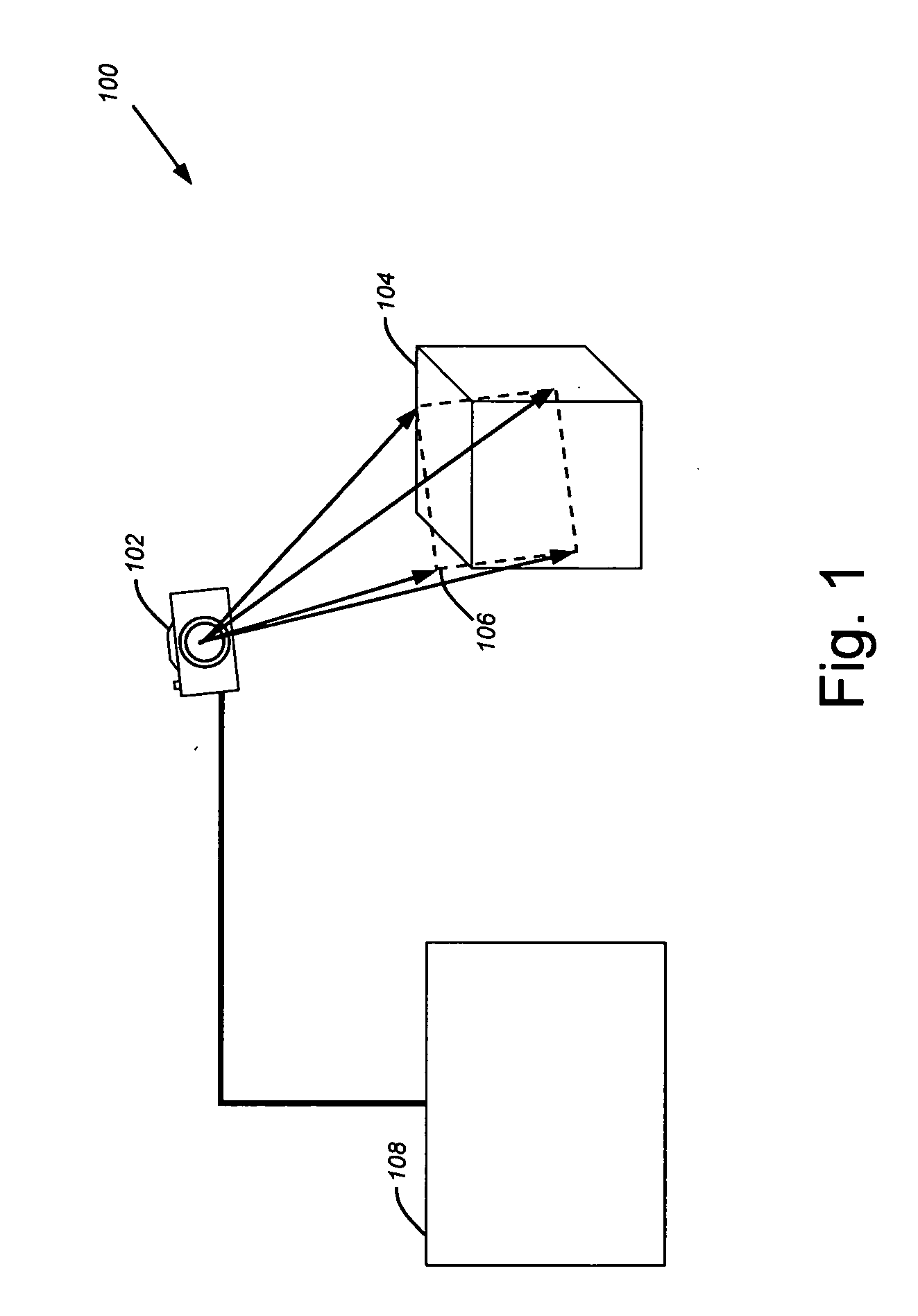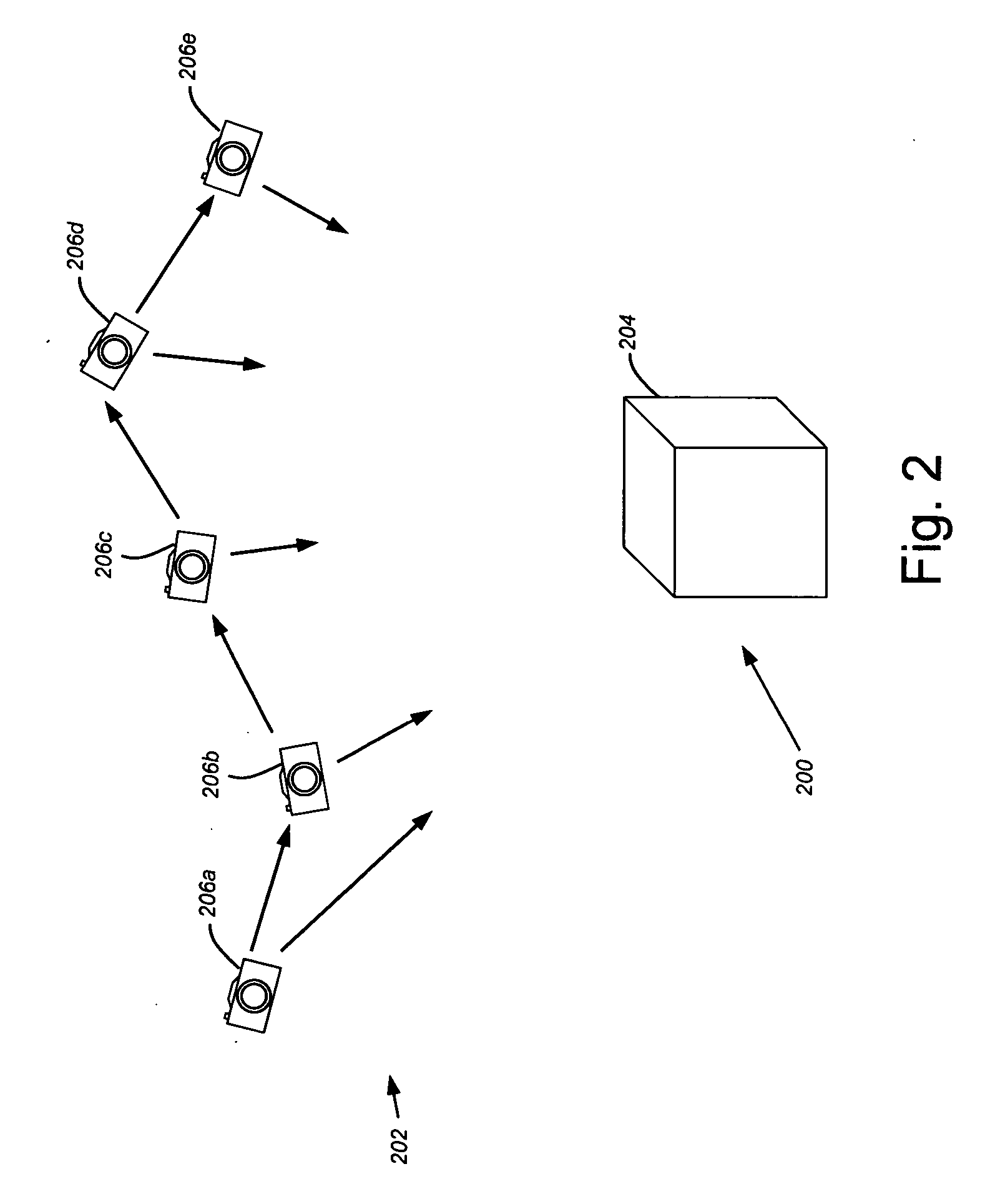Determining camera motion
a three-dimensional imaging and camera technology, applied in the field of camera motion determination, can solve the problems of computational intensive techniques, additional difficulties in real imaging environments, and the inability to perform typical registration techniques such as the iterative closest point (“icp”) method with difficult-to-register surfaces, and achieve the effect of efficient parameterization
- Summary
- Abstract
- Description
- Claims
- Application Information
AI Technical Summary
Benefits of technology
Problems solved by technology
Method used
Image
Examples
Embodiment Construction
[0030] Described below is a technique for reconstructing an aggregate three-dimensional point cloud using camera motion determinations for a series of images from a stereoscopic or multi-aperture camera system. However, it will be appreciated that the inventive concepts disclosed herein are not limited to such applications, and may be usefully employed in any imaging system, for visible light or otherwise, in which two-dimensional and three-dimensional image data is available for use in reconstruction. Thus the techniques may be employed, for example, with a multi-camera motion picture system, a stereoscopic microscope, or any other imaging system where three-dimensional data might be derived from two-dimensional images. Similarly, while the following discussion focuses on a camera that moves relative to an imaging subject, the techniques described herein are equally applicable to a stationery camera that captures sequential images of one or more moving objects. In such uses, the an...
PUM
 Login to View More
Login to View More Abstract
Description
Claims
Application Information
 Login to View More
Login to View More - R&D
- Intellectual Property
- Life Sciences
- Materials
- Tech Scout
- Unparalleled Data Quality
- Higher Quality Content
- 60% Fewer Hallucinations
Browse by: Latest US Patents, China's latest patents, Technical Efficacy Thesaurus, Application Domain, Technology Topic, Popular Technical Reports.
© 2025 PatSnap. All rights reserved.Legal|Privacy policy|Modern Slavery Act Transparency Statement|Sitemap|About US| Contact US: help@patsnap.com



